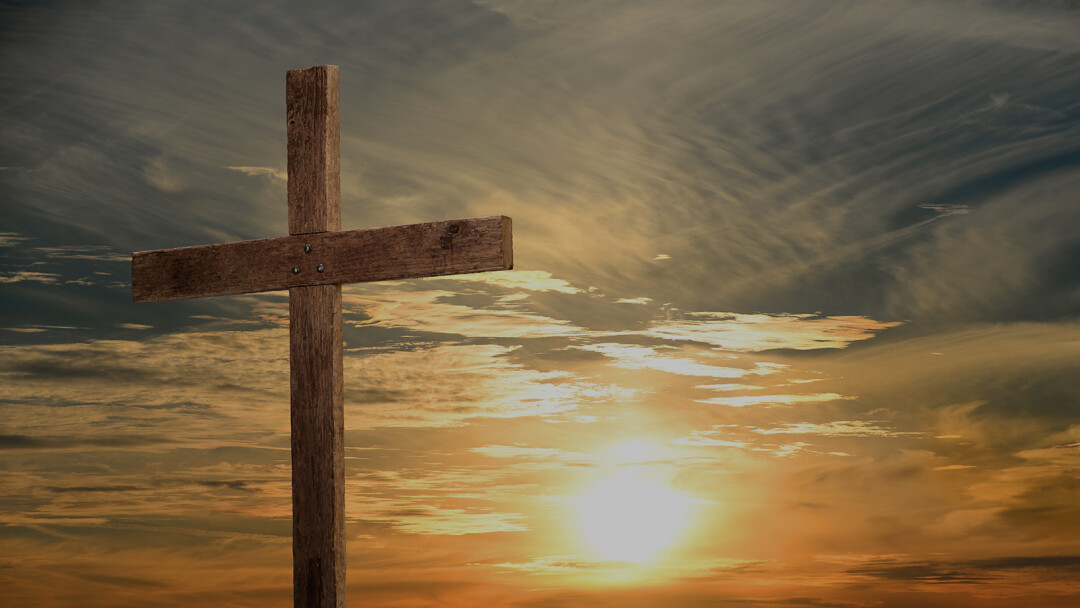Eye Level

I am tall. This was made clear to me in catalogues and stores. I am directed to what is called big and tall. Although a great advantage in the sport of basketball, it turns out one can only capitalize on this advantage if you also possess skill.
I am tall.
In a psychiatric hospital height is not an advantage. If you are trying to provide comfort and pastoral care to someone who is struggling with profound mental illness or chronic schizophrenia, looming over someone, looking like a massive wave about to crush them does not aid conversation.
What does provide aid is getting down to eye level, or even a place below them. Hence, my habit of taking a seat is not entirely lethargy. If I can't sit, I will stoop or slouch; I will, if the occasion warrants it, even kneel. This is done to mitigate the circumstance of my height. I am tall.
I must confess I don't like sitting on the ground. I admire the people who flop down on the grass, sit on carpet. I admire them because it seems like a sacrifice. If ever I wanted to punish myself with a Lenten devotion of self-loathing, I would devote myself to sitting on the ground. I like the idea of being grounded; I understand the electrical need of grounding. I just don't want to do it. It's uncomfortable. I think this aversion is a side-effect of being tall.
This aversion persists except for grandchildren and dogs. For this cohort I will sit on the ground to get to their eye level. I won't enjoy being there, uncomfortable in short order, but for grandchildren or dogs I will "cop a squat." I will because it brings me close to them, gives them a sense that I love them, may even in future times gain me a sense of notoriety. "He would sit down on the ground with us," is something I hope a grandchild will remember and say when my time is complete. It may mitigate the trouble I caused. Who knows. I do know a dog will not be so loquacious. But so often demanding that they "sit", I feel obliged to do the same.
There is something powerful in the idea of "seeing eye to eye." We tell people we love it is good to see their eyes. Zoom is helpful, but there is an indirect eye contact. Unsettling.
Many years ago my understanding of our lesson was dramatically changed when I saw it in terms of "eye level." This understanding came from a tour guide in Israel.
Guide's name was Saad. A living legend in the world of tour guides, at least that is what other guides said. And I can attest hanging out with Saad was a life-changing experience. One of the most profound changes was how he described the crucifixion as eye level. I can still hear his voice: Jesus was crucified at eye level. He was not up in the air; he was just a foot off the ground.
Saad explained with great clarity the Romans were extremely efficient. Crucifying someone ten feet in the air, how much of Christian art portrays it, would have been highly inefficient and provide a whole host of difficulties which is inconsistent with how they ran an empire. But his most persuasive claim was regarding how the power of the execution would have been greater if the crucified was at your eye level. You could see the terror; you could make eye contact with the crucified.
All of sudden our passage today took on a whole different meaning. The taunting of the Pharisees, if Jesus was crucified as he is depicted in medieval and renaissance paintings, the taunting would have been more like a shout. "You saved others; save yourself" [shouted]. At eye level the Pharisees can lean in and whisper, let Jesus feel their anger and hatred.
What really helped though was not just efficiency and degree of torture, but also the impact on the crowd. Romans went through the process of crucifixion to terrorize a community. This was a public moment. Jesus was crucified just outside the gates of the city as a message to people: this is what happens if you cause trouble. Don't cause trouble. This message has greater impact at eye level.
This changed not only how I viewed art, but also hymnody. Our hymns are filled with images of "on a hill far away" or "lift high the cross" or "on the cross of Christ I glory." Doesn't really match up at eye level. And this also impacted the way I read Paul. We preach Christ crucified, the cross is foolishness and a stumbling block. Perhaps. At ten feet up in the air, on a lonely hilltop, perhaps there it can be a symbol. Just outside the city of Jerusalem, at eye level, the cross is what it was actually used for: terror and torture.
And yet, there is a moment of glory in the crucifixion. In the reading that followers our passage is a moment of glory. It is not easy to see at first. Moreover, it only makes sense at eye level and that is the response of the soldiers. "This man truly was the Son of God." They glorified him. This claim only makes sense if you consider how close the soldiers would have been to the people they crucified, saw the impact of torture, knew how most people are likely to respond because they saw it in their eyes, they heard their cries and dying words. Heard them gasp for air.
That Jesus was different, a moment of glory not shame, seems to be the connotation. They were in awe of him. Were they in awe of his humility; his silence; his endurance? They don't say, or their words don't convey what caused them to offer him praise.
We might take a clue from one of the few hymns we have written by those who endured torture and terror. He Never Said A Mumblin' Word. This spiritual is the answer to another spiritual, "were you there?" Scholars suggest those hymns were a way to navigate the grief of hearing the news about your child who died after being sold away. You are hearing a report of a son or a daughter who died, you are asking, "were you there," and the answer, he never said a mumblin word is a way to express a great hope, "my child died with courage and dignity."
Even though most Christian art depicts the crucifixion in a way that is more symbolic, triumphant even, and even though our hymnody is more about Paul's theology than the reality of Roman rule and torture, we do have art that expresses the depth of the moment, art that enters the event like the spiritual, "he never said a mumblin word." The Pieta by Michelangelo is powerful because of the eyes of Mary. We are in the crucifixion at eye level with her.
The Roma Pieta of Michelangelo is arguably one of the most sublime, beautiful works of art there is. The Mona Lisa is considered such as well. It is art of art, a kind of door unto perception and beauty and dimension, but the Mona Lisa doesn't heal. The Roma Pieta of Michelangelo where a mother holds her child and gazes into his suffering and death, Mary's gaze cradling her son, is an invitation to all who grieve to enter her moment, transfer your grief to her. This is healing. The healing is in her gaze, the eye level, seeing face to face. All has come down.
Near the end of his life, Michelangelo sought to create another pieta. This one is on the cover of your bulletin, the Florentine Pieta. It was the last piece Michelangelo worked on; he was 72 at the time.
There are a lot of legends about the Florentine pieta. First and foremost is that it is unfinished. Was this on purpose? He did leave statues unfinished on purpose, a vision of life emerging, to say life is always happening, never complete. Is that the case here? Or did he just give up, not have enough time?
Another legend is around the fourth character, the man standing above. Scholars believe this is Nicodemus and most also believe this is a self-portrait. Michelangelo was carving himself into the scene. He is looking at death, looking at grief, the transience of life. We know this is true because he wrote about such near the end of his life.
The last and most intriguing bit of lore is that Michelangelo tried to destroy it. He took a hammer to it and damaged the leg and arm of Jesus almost like vandalism. One of his assistants had to restrain him from doing more damage. Some say this was out of frustration, he couldn't make the statue embody what he hoped to achieve; others say he was too old and the veined marble too complex so it was an act of vanity, he didn't want anyone to see his limitations.
The two statues, the two pietas, are almost fifty years apart. The Roma pieta is the work of a young artist, the Florentine the hand of an elderly man. I must confess that I am mesmerized by both. The first to me is the power of art itself, how it heals the brokenness of life. It can. I have felt it. The second keeps drawing me in because it is so complex. The early pieta finds so much power in simplicity, this is what grief looks like, feels it, does to us when we see it at eye level. The Florentine is almost in motion.
The Florentine pieta feels like Michelangelo is trying to see life itself, all of life, in all its messiness and transience, glory and failure—trying to make sense of it all. That is how I take Mary Magdalene standing at a distance, or the lack of repose, or the hovering quality of Nicodemus, and Mary's grief intruded upon. It is as if all the pieces of life are there: memory and fate, love and hate, the sublime and the ridiculous. It's life itself.
The early pieta captured the essence of a moment of life- grief. That is its power. In Florence, at the end of his life, he tried to capture the essence of life itself. Not one piece, one part, one feeling, all of it.
My theory of the smashing of the Florentine pieta is Michelangelo struck his work not in anger or vanity, but as a moment of relief. A part of me hopes he could see how he didn't need to make sense of it all. Life was not lived well this way. Such a work of art if completed might claim: you can make sense of it. Finishing it might mislead and injure the well-intended. It was not his job to make sense of life anymore.
I believe Matthew described the death of Jesus as a moment of courage and senseless suffering. Jesus healed and spoke the truth without fear and cared for the poor, that someone like this would be so threatening to us we would crush him should never make sense. Matthew speaks about the death of Jesus to challenge our propensity for violence, our fear and anger, our justification of rage. He makes this case quite often. Yet, there is no sense to it, there is no, well, that all makes sense now. Paul tried to make sense of life through the cross.
There is no sense to it.
I believe the soldiers gloried in his courage. I do. That makes sense.
When we stand at eye level with the cross of Jesus, we ought to feel courage, but we should also feel the senselessness of our violence. Maybe that is what freed Michelangelo, let him stop trying to make sense of it all. In the courage of Jesus I glory. The cross, not so much. Amen.

Rev. Dr. Fred G. Garry
Senior Pastor & Head of Staff
Sermon Notes
You can add your own personal sermon notes along the way. When you're finished, you'll be able to email or download your notes.
